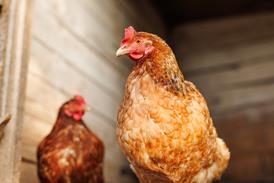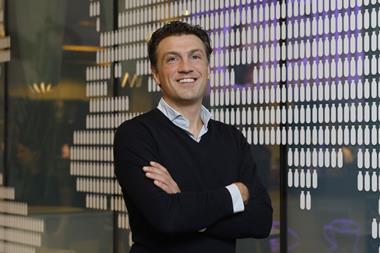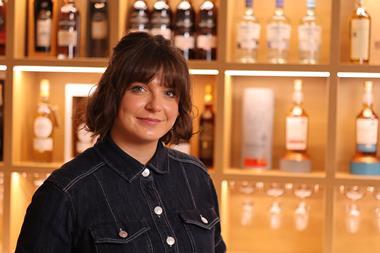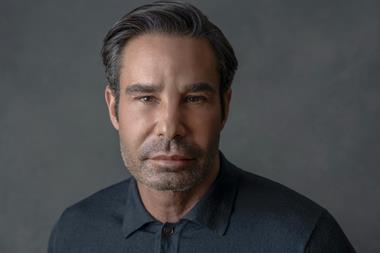The supermarket as we know it either has to evolve or it will be consigned to the dust heap within 20 years.”
So says Paco Underhill, the charismatic retail anthropologist and founder of New York research consultancy Envirosell.
As imposing physically (he’s 6 ft 4) as he is intellectually, Underhill is master of the soundbite (at The New Yorker conference this May, the writer of the seminal Why we Buy: The Science of Shopping gave a memorable speech in which he described the toilets in the economy section of a crowded aeroplane as “the filthiest place in the first world”). And he doesn’t disappoint in an exclusive interview with The Grocer at his downtown office near Union Square.
The only problem is that he directs his warning not so much at the giants of the US grocery scene, but at Tesco, Morrisons and Sainsbury’s (or Sansberry as he pronounces it) and none of what he says makes for comfortable listening.
First, he sets about outlining what he sees as the key differences between the US and UK grocery scenes. “Let’s talk first historically,” he says. “On the other side of the pond, being a merchant is a long-established middle and upper class profession. Particularly in Britain, it is a role that has historically been linked to servicing the aristocracy. In the US, we are a post-revolutionary society, meaning we fought a war with Britain and among ourselves based on the concept it shouldn’t matter who daddy is, it should matter who you are.”
In Underhill’s universe, the issues are pretty black and white. I am about to point out here that some of the biggest names in UK grocery have rather more humble roots than he suggests, but he’s already proven to be a tricky customer (before I am allowed to start the interview he tells me to sit down, while he stands over me and demands to know whether I will try to sell him advertising, in which case I can leave) so I keep quiet. I’m glad I do, because although he plays a bit fast and loose with the facts and his delivery is a tad over-authoritative (perhaps to compensate for the remnants of a serious stutter), there’s no arguing with the punchline. Unlike the UK, the role of the merchant in the US is intrinsically linked to the country’s immigrant culture, says Underhill, continuing his social history.
“Particularly in grocery, you see the roots in the immigrant entrepreneurial families. They may be Greek, Jewish, Italian, but they go into grocery because they’ve been locked out of a lot of other professions. No-one graduates from Harvard Business School and goes to work at Stop & Shop.”
The Brits, on the other hand, are constrained by the country’s scale, archaic infrastructure and class system, he contends. “Britain is an island where the cost of real estate is high and the basic infrastructure is still late 19th century, early 20th century,” he says. “It has a centre, meaning it either happens in London or it doesn’t happen. While there are many things that the British do extraordinarily well, historically, they haven’t done a great job of exporting retail. Those countries that have succeeded in exporting retail have been driven by internal competition. Zara and Mango have probably been the two most successful retail brands in the world over the past 10 years.”
What about Tesco, I ask. Hasn’t the third- biggest retailer in the world made a good fist of its international expansion? Underhill is not impressed, particularly with Tesco’s US foray. “One of the classic mistakes that people make is trying to export their retail culture without having some sensitivity to it. Tesco is having that problem with its Fresh & Easy format in the Californian market,” he says. “If I had been Tesco, I wouldn’t have gone into one of the most competitive retail markets in the US, a market already over-serviced by convenience stores. I talked to them some years ago and they were so sure they were going to have a hit. I have a great deal of respect for them but they are a good example of a retailer who came in with blinkers on.”
Tesco has struggled in the US just as Whole Foods Market has struggled in the UK because it tried to import a culture, says Underhill, clearly miffed Tesco didn’t seek his advice. “I might point out something here. We are one of the principal testing agencies for convenience stores in the world and I’ve never had anyone from Tesco knock on our door to ask for a little help.” Had it done so, it might not be in the predicament it is now.
Underhill is one of the foremost authorities on shopper behaviour and his services are much in demand. As if to underscore the point, he is interrupted by a member of staff who informs him that the camera crew have arrived for his next interview. He waves her away and continues with his appraisal of the UK grocery market – in which he decides to demote the big four to the big three.
“If I look at the British and US grocery markets, first of all, you have three national players Asda, Sainsbury’s and Tesco.” He doesn’t count Morrisons? “No, no, if there’s a fourth one it’s Musgrave.” Hmmm. He has in the past done some consulting work for the Cork-based group, but his assertion that it operates the biggest convenience chain in Britain is off the mark.
I also get the impression he’s not too familiar with Morrisons, but again the inveterate iconoclast reacts to my evident scepticism by moving on to to what he sees as another significant distinction between the UK and US.
“Britain has national players. If you go to Glasgow or Macclesfield, you’ll find all three brands there, whereas here in New York City there is no Kroger. We are serviced strictly by regional brands.” Isn’t Wal-Mart a national brand? “Do you see Wal-Mart in New York City? Wal-Mart is not a national player,” he retorts. “There are still significant parts of the US with no access to a Wal-Mart supercentre.”
The interview is getting bogged down in semantics. In an effort to steer things back on course, I ask him what he’d like to see grocers do better. His response is unequivocal: engineer further costs out of the supply chain and do more to address the threats posed by the evolution of technology and shopping behaviour.
“Food and apparel across the world are under pressure. The reason is this,” he says, holding up his mobile phone. “The 21st-century consumer is presented with a series of bills in a way that didn’t exist 10 years ago and a set of bills – mobile phone, internet, cable TV – that didn’t exist. Where the consumer has had to compromise is food and apparel. They have less money than they had conceptually 10 years ago.”
It is this long-term decline in disposable income, not the short, sharp shock of the credit crunch, that has prompted some of the biggest changes to the grocery industry, suggests Underhill.
“There are a couple of different trends. First is the continuing booming of private label, and second the consumer product manufacturing giants such as Unilever and P&G are going to have to find more creative ways of getting directly to their customer as opposed to going to a store,” he says. “We’re looking at what we’re calling convergence. Eighty per cent of what goes into our refrigerator is routine purchases. We’re going to be looking at the smart kitchen or smart refrigerator.”
The main reason smart refrigerators have not yet taken off despite first being touted years ago is the disparity between hardware and software obsolescence, he says. “Once we resolve the hardware software dichotomy, your refrigerator will be able to send you an SMS saying this is what we need, this is what we’re running out of,” he says.” We’re going to find some other distribution network for routine purchases.”
Technology will also have a dramatic impact on the pricing environment, he predicts. The internet has already given consumers greater access to pricing information and mobile phones look set to take that accessibility to the next level. All of this has empowered the consumer. “The basic access to information levels the playing field,” he says. “The other thing is the explosive growth of chains such as Aldi and here, the Aldi-owned Trader Joe’s. They both engender tremendous loyalty.”
Underhill believes UK grocers could learn a thing or two about how their US counterparts generate loyalty and handle bigger format stores. “We do the large format stores better than the Brits do, including Tesco, and we do it considerably cheaper. If you go and look at a Fresh Market or a Harris Teeter or the regional chains such as H-E-B in Texas, the large-format store is ours. That said the apogee has been reached.”
However, on both sides of the pond, maintaining the consumer’s attention will become harder as the supermarket continues to evolve, he says. “Do you know what the average time spent is in a supercentre? It’s 31 minutes. And it’s consistent across the world. We’re confronting the crisis in visual acuity. Visual language is evolving faster than the spoken or written word.”
At the end of the day, the way retailers communicate with consumers needs to evolve as rapidly as the technological and cultural changes transforming the shopping environment, argues Underhill. In fact, it’s revolution, not evolution that’s required. “I feel strongly that the grocery store needs to rethink itself in its entirety from checkout to ready-to-eat to the actual organisation of the aisles,” he says.
That's if it wants to be around in 20 years' time.
As imposing physically (he’s 6 ft 4) as he is intellectually, Underhill is master of the soundbite (at The New Yorker conference this May, the writer of the seminal Why we Buy: The Science of Shopping gave a memorable speech in which he described the toilets in the economy section of a crowded aeroplane as “the filthiest place in the first world”). And he doesn’t disappoint in an exclusive interview with The Grocer at his downtown office near Union Square.
The only problem is that he directs his warning not so much at the giants of the US grocery scene, but at Tesco, Morrisons and Sainsbury’s (or Sansberry as he pronounces it) and none of what he says makes for comfortable listening.
First, he sets about outlining what he sees as the key differences between the US and UK grocery scenes. “Let’s talk first historically,” he says. “On the other side of the pond, being a merchant is a long-established middle and upper class profession. Particularly in Britain, it is a role that has historically been linked to servicing the aristocracy. In the US, we are a post-revolutionary society, meaning we fought a war with Britain and among ourselves based on the concept it shouldn’t matter who daddy is, it should matter who you are.”
In Underhill’s universe, the issues are pretty black and white. I am about to point out here that some of the biggest names in UK grocery have rather more humble roots than he suggests, but he’s already proven to be a tricky customer (before I am allowed to start the interview he tells me to sit down, while he stands over me and demands to know whether I will try to sell him advertising, in which case I can leave) so I keep quiet. I’m glad I do, because although he plays a bit fast and loose with the facts and his delivery is a tad over-authoritative (perhaps to compensate for the remnants of a serious stutter), there’s no arguing with the punchline. Unlike the UK, the role of the merchant in the US is intrinsically linked to the country’s immigrant culture, says Underhill, continuing his social history.
“Particularly in grocery, you see the roots in the immigrant entrepreneurial families. They may be Greek, Jewish, Italian, but they go into grocery because they’ve been locked out of a lot of other professions. No-one graduates from Harvard Business School and goes to work at Stop & Shop.”
The Brits, on the other hand, are constrained by the country’s scale, archaic infrastructure and class system, he contends. “Britain is an island where the cost of real estate is high and the basic infrastructure is still late 19th century, early 20th century,” he says. “It has a centre, meaning it either happens in London or it doesn’t happen. While there are many things that the British do extraordinarily well, historically, they haven’t done a great job of exporting retail. Those countries that have succeeded in exporting retail have been driven by internal competition. Zara and Mango have probably been the two most successful retail brands in the world over the past 10 years.”
What about Tesco, I ask. Hasn’t the third- biggest retailer in the world made a good fist of its international expansion? Underhill is not impressed, particularly with Tesco’s US foray. “One of the classic mistakes that people make is trying to export their retail culture without having some sensitivity to it. Tesco is having that problem with its Fresh & Easy format in the Californian market,” he says. “If I had been Tesco, I wouldn’t have gone into one of the most competitive retail markets in the US, a market already over-serviced by convenience stores. I talked to them some years ago and they were so sure they were going to have a hit. I have a great deal of respect for them but they are a good example of a retailer who came in with blinkers on.”
Tesco has struggled in the US just as Whole Foods Market has struggled in the UK because it tried to import a culture, says Underhill, clearly miffed Tesco didn’t seek his advice. “I might point out something here. We are one of the principal testing agencies for convenience stores in the world and I’ve never had anyone from Tesco knock on our door to ask for a little help.” Had it done so, it might not be in the predicament it is now.
Underhill is one of the foremost authorities on shopper behaviour and his services are much in demand. As if to underscore the point, he is interrupted by a member of staff who informs him that the camera crew have arrived for his next interview. He waves her away and continues with his appraisal of the UK grocery market – in which he decides to demote the big four to the big three.
“If I look at the British and US grocery markets, first of all, you have three national players Asda, Sainsbury’s and Tesco.” He doesn’t count Morrisons? “No, no, if there’s a fourth one it’s Musgrave.” Hmmm. He has in the past done some consulting work for the Cork-based group, but his assertion that it operates the biggest convenience chain in Britain is off the mark.
I also get the impression he’s not too familiar with Morrisons, but again the inveterate iconoclast reacts to my evident scepticism by moving on to to what he sees as another significant distinction between the UK and US.
“Britain has national players. If you go to Glasgow or Macclesfield, you’ll find all three brands there, whereas here in New York City there is no Kroger. We are serviced strictly by regional brands.” Isn’t Wal-Mart a national brand? “Do you see Wal-Mart in New York City? Wal-Mart is not a national player,” he retorts. “There are still significant parts of the US with no access to a Wal-Mart supercentre.”
The interview is getting bogged down in semantics. In an effort to steer things back on course, I ask him what he’d like to see grocers do better. His response is unequivocal: engineer further costs out of the supply chain and do more to address the threats posed by the evolution of technology and shopping behaviour.
“Food and apparel across the world are under pressure. The reason is this,” he says, holding up his mobile phone. “The 21st-century consumer is presented with a series of bills in a way that didn’t exist 10 years ago and a set of bills – mobile phone, internet, cable TV – that didn’t exist. Where the consumer has had to compromise is food and apparel. They have less money than they had conceptually 10 years ago.”
It is this long-term decline in disposable income, not the short, sharp shock of the credit crunch, that has prompted some of the biggest changes to the grocery industry, suggests Underhill.
“There are a couple of different trends. First is the continuing booming of private label, and second the consumer product manufacturing giants such as Unilever and P&G are going to have to find more creative ways of getting directly to their customer as opposed to going to a store,” he says. “We’re looking at what we’re calling convergence. Eighty per cent of what goes into our refrigerator is routine purchases. We’re going to be looking at the smart kitchen or smart refrigerator.”
The main reason smart refrigerators have not yet taken off despite first being touted years ago is the disparity between hardware and software obsolescence, he says. “Once we resolve the hardware software dichotomy, your refrigerator will be able to send you an SMS saying this is what we need, this is what we’re running out of,” he says.” We’re going to find some other distribution network for routine purchases.”
Technology will also have a dramatic impact on the pricing environment, he predicts. The internet has already given consumers greater access to pricing information and mobile phones look set to take that accessibility to the next level. All of this has empowered the consumer. “The basic access to information levels the playing field,” he says. “The other thing is the explosive growth of chains such as Aldi and here, the Aldi-owned Trader Joe’s. They both engender tremendous loyalty.”
Underhill believes UK grocers could learn a thing or two about how their US counterparts generate loyalty and handle bigger format stores. “We do the large format stores better than the Brits do, including Tesco, and we do it considerably cheaper. If you go and look at a Fresh Market or a Harris Teeter or the regional chains such as H-E-B in Texas, the large-format store is ours. That said the apogee has been reached.”
However, on both sides of the pond, maintaining the consumer’s attention will become harder as the supermarket continues to evolve, he says. “Do you know what the average time spent is in a supercentre? It’s 31 minutes. And it’s consistent across the world. We’re confronting the crisis in visual acuity. Visual language is evolving faster than the spoken or written word.”
At the end of the day, the way retailers communicate with consumers needs to evolve as rapidly as the technological and cultural changes transforming the shopping environment, argues Underhill. In fact, it’s revolution, not evolution that’s required. “I feel strongly that the grocery store needs to rethink itself in its entirety from checkout to ready-to-eat to the actual organisation of the aisles,” he says.
That's if it wants to be around in 20 years' time.
Underhill on in-store technology and merchandising
One of Underhill’s biggest bugbears is the poor use of technology in-store. He points to flatscreen TVs. “Flatscreen TVs have to be within customer sight lines,” he says. “No-one walks around the store looking up. The placement is often flawed and programming inappropriate.” UK retailers too often get the basic lighting wrong, he adds. “Yet correctly applied lighting is our cheapest merchandising tool. A spot light and a dark fixture can turn dresses or turnips into heroes. Zara and Mango have transformed the fashion industry by presenting cheap clothing in a theatrical setting.” If retailers want to optimise the impact of technology, they need to realise that consumers see the supermarket environment in different ways, says Underhill. “From Tokyo to LA to Rochdale, our eyes are ageing at the same rate,” he explains. “As we age, no matter how corrected our eyes are, our lenses yellow. Basic visual acuity issues define how we look at signs and colour and how we process the information presented to us. Ironically, our visual language is evolving faster than our spoken or written word. Our eyes may be aging and tired, but their connection to our brains has never been better.” This poses a huge dilemma for retailers when it comes to merchandising tactics, admits Underhill. “The problem our signage and visual display culture faces is that the people doing the work at the CAD cam computer screens are often under the age of 30 and their eyes work differently than their elders’.”
One of Underhill’s biggest bugbears is the poor use of technology in-store. He points to flatscreen TVs. “Flatscreen TVs have to be within customer sight lines,” he says. “No-one walks around the store looking up. The placement is often flawed and programming inappropriate.” UK retailers too often get the basic lighting wrong, he adds. “Yet correctly applied lighting is our cheapest merchandising tool. A spot light and a dark fixture can turn dresses or turnips into heroes. Zara and Mango have transformed the fashion industry by presenting cheap clothing in a theatrical setting.” If retailers want to optimise the impact of technology, they need to realise that consumers see the supermarket environment in different ways, says Underhill. “From Tokyo to LA to Rochdale, our eyes are ageing at the same rate,” he explains. “As we age, no matter how corrected our eyes are, our lenses yellow. Basic visual acuity issues define how we look at signs and colour and how we process the information presented to us. Ironically, our visual language is evolving faster than our spoken or written word. Our eyes may be aging and tired, but their connection to our brains has never been better.” This poses a huge dilemma for retailers when it comes to merchandising tactics, admits Underhill. “The problem our signage and visual display culture faces is that the people doing the work at the CAD cam computer screens are often under the age of 30 and their eyes work differently than their elders’.”
Snapshot
How would you sum yourself up? I am a bald, nerdy 56-year-old American research wonk. No one has ever thought of me as being fashionable. However, I do know about shops and shopping and I’ve always been good at watching – it’s part Zen and part commerce. You’ve written two seminal books, Why We Buy and Call of the Mall. Are you working on anything new? The book I’m working on now is called The Female Factor: The Worship of Goddesses. It talks about how the changing status of women is affecting our world. You seem to have some issues about the British social system. Care to explain? Almost every time I’m in London someone rubs the class issue or the colonial issue in my face and having been a product of British education for a bunch of my life... What’s your typical day like? I spend about 150 nights a year on the road. In the past year I’ve travelled or worked in 22 countries. I manage jet lag, changing climates and living out of luggage as well as anyone I know. What about you might surprise people? In the kitchen, in my home in New York City – I designed my own stove. The burners are in a straight line and are set at different heights. Thus, the tops of any given pan sit at same level. It is very logical and works perfectly.
How would you sum yourself up? I am a bald, nerdy 56-year-old American research wonk. No one has ever thought of me as being fashionable. However, I do know about shops and shopping and I’ve always been good at watching – it’s part Zen and part commerce. You’ve written two seminal books, Why We Buy and Call of the Mall. Are you working on anything new? The book I’m working on now is called The Female Factor: The Worship of Goddesses. It talks about how the changing status of women is affecting our world. You seem to have some issues about the British social system. Care to explain? Almost every time I’m in London someone rubs the class issue or the colonial issue in my face and having been a product of British education for a bunch of my life... What’s your typical day like? I spend about 150 nights a year on the road. In the past year I’ve travelled or worked in 22 countries. I manage jet lag, changing climates and living out of luggage as well as anyone I know. What about you might surprise people? In the kitchen, in my home in New York City – I designed my own stove. The burners are in a straight line and are set at different heights. Thus, the tops of any given pan sit at same level. It is very logical and works perfectly.

















No comments yet